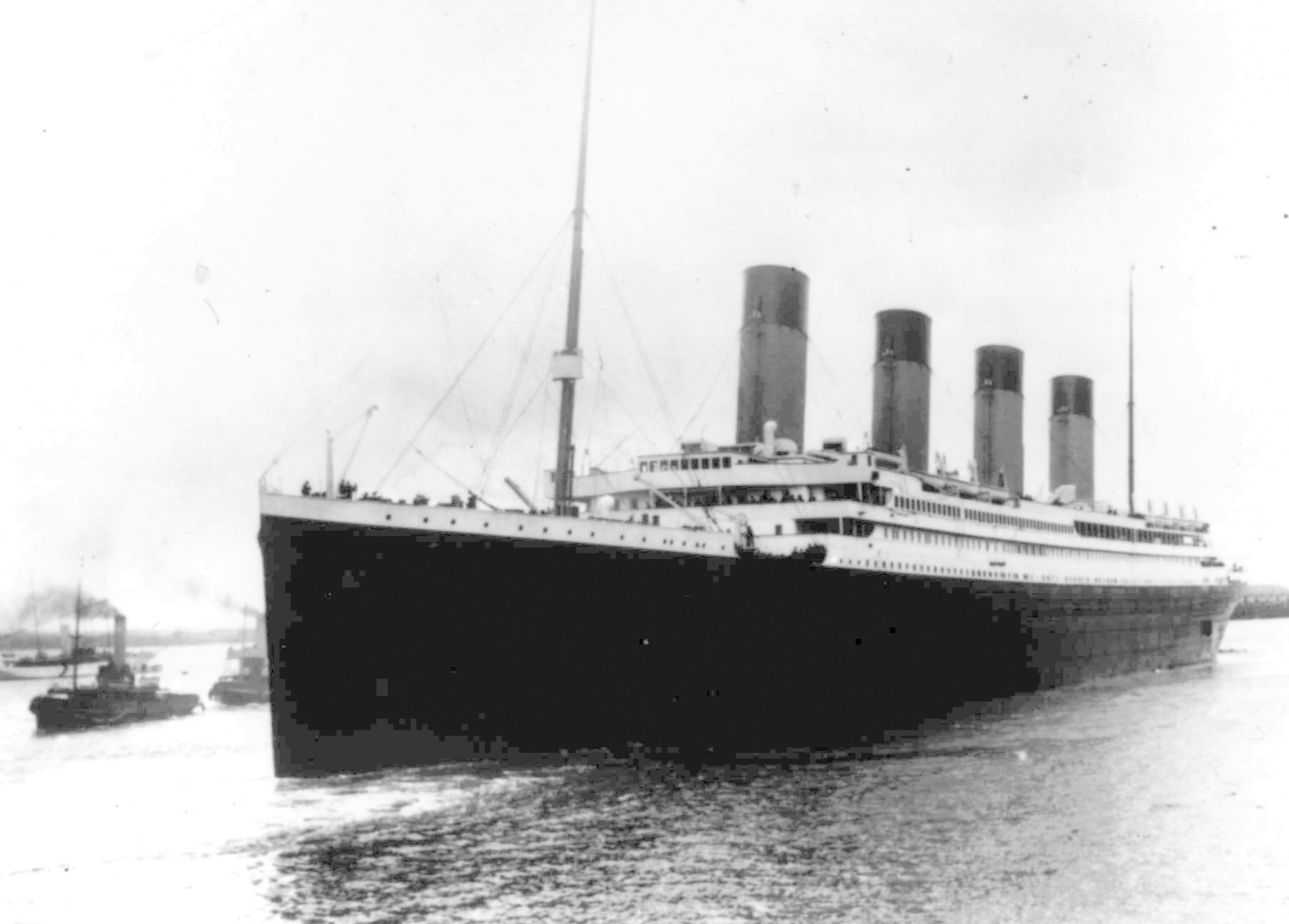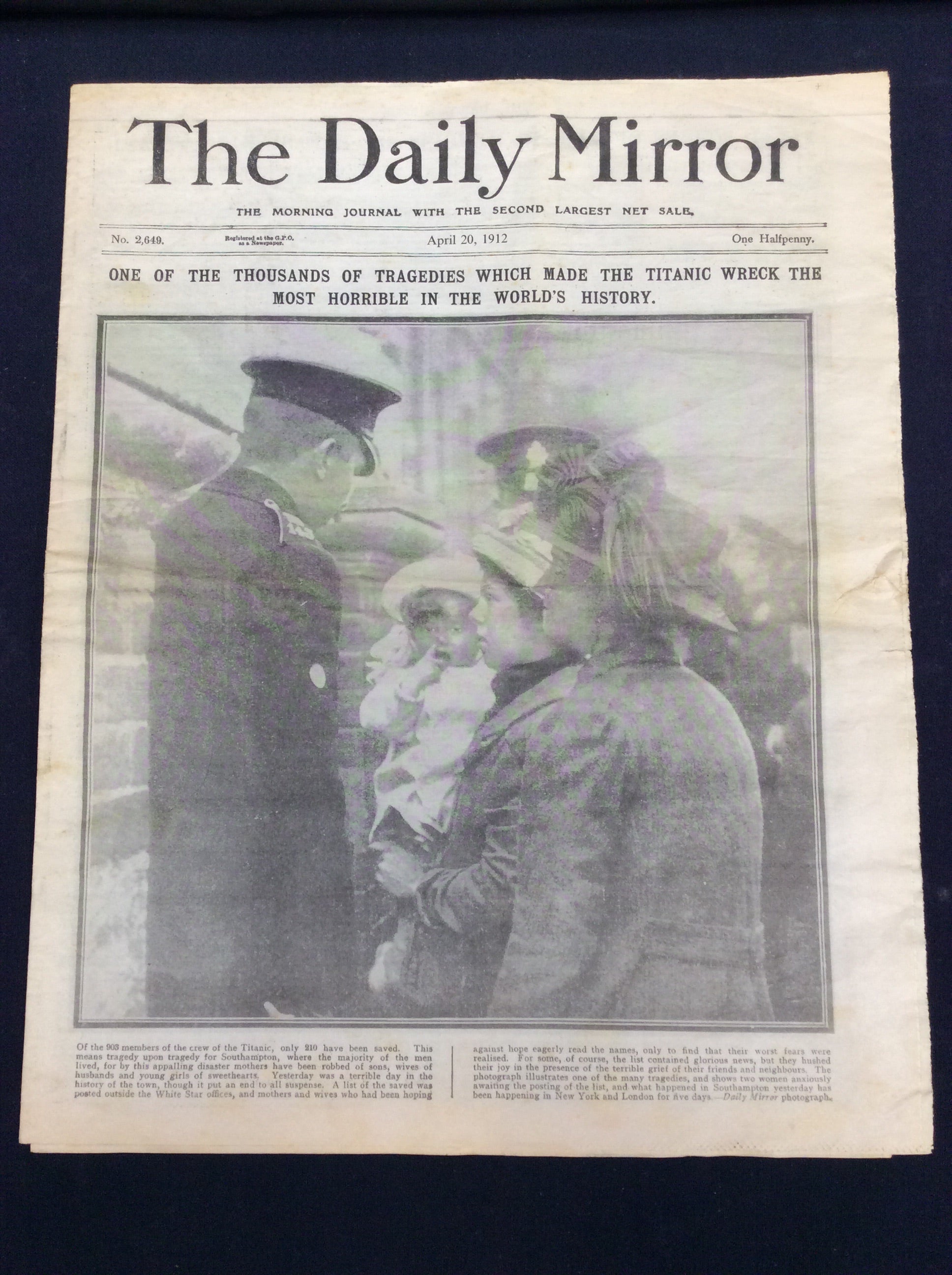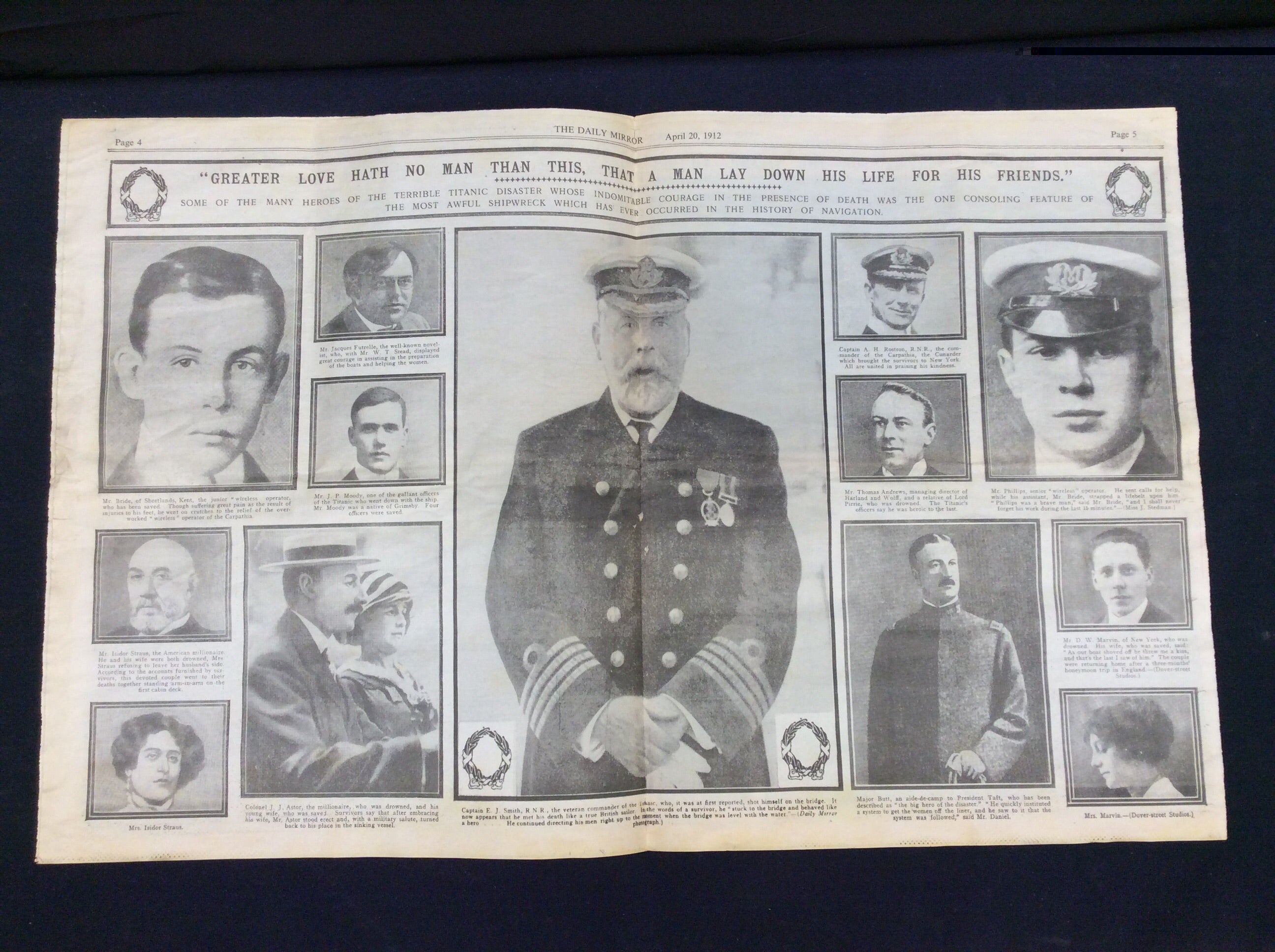Newspaper covering Titanic sinking discovered after 112 years in wardrobe
‘When you see the faces of those affected, it’s very moving,’ the auctioneer said

A newspaper revealing the devastating human impact of the Titanic sinking has been discovered after 112 years in a wardrobe.
The copy of the Daily Mirror was published five days after the sinking on 20 April 1912.
Its front-page story depicts passengers’ family members desperately waiting for the list of survivors for their loved ones in Southampton.
Discovered in a home in Lichfield, Staffordshire, the newspaper was sold by Hanson’s Auctioneers this week, who described the find as a “valuable piece of social history”.
“The sinking of the Titanic has been heavily documented in films, TV shows and books and we know much about those who lost their lives,” owner Charles Hanson said.
“This find reminds us of the many bereaved families and friends, heartbroken mothers, fathers and wives.”
The Titanic, which was widely advertised as being “practically unsinkable” ahead of its maiden voyage, was the deadliest maritime disaster in history.
More than 1,500 people lost their lives after the liner struck an iceberg in the middle of the North Atlantic. There were just over 700 survivors.


While there were famously too few lifeboats on the Titanic, many of the boats launched were half-empty because of people’s unrelenting belief that the ship was unsinkable.
Southampton, which was home to “the majority” of the doomed liner’s crew, is reported to have suffered “tragedy upon tragedy”.
“A list of the saved was posted outside the White Star offices, and mothers and wives who had been hoping against hope eagerly read the names, only to find their worst fears were realised,” it read.
“By this appalling disaster mothers have been robbed of sons, wives of husbands and young girls of sweethearts.”
The newspaper described the publication of the survivors’ list as “a terrible day in the history of the town, though it put an end to all suspense”.
The cover story was accompanied by a two-page spread inside the Daily Mirror that included several pictures of victims, including Titanic’s captain Edward Smith.

Following its auction, this piece of maritime and societal history sold for £34 on Tuesday (20 August).
The auctioneer said that accounts of the sinking tend to focus on the victims themselves and not their families, which is why the newspaper is so interesting.
“When you see the faces of those affected, it’s very moving,” Mr Hanson said.
In the wake of the disaster, both the British and American Board of Trade updated their regulations to ensure that vessels would always have enough lifeboats for those aboard.
The newspaper was found alongside other papers documenting key historical events including King George V’s coronation in 1911.
Join our commenting forum
Join thought-provoking conversations, follow other Independent readers and see their replies
Comments
Bookmark popover
Removed from bookmarks